APPLIED PHYSICS LABORATORY, LAUREL, MD – With this morning’s (July 14) do or die flyby of Pluto by NASA’s New Horizons spacecraft at 7:49 a.m. EDT while traveling over 3 billion miles away, America completed the initial up close reconnaissance of the last explored planet of our solar system at its frigid, far flung reaches and revealed a remarkably differentiated world dazzling us with alien terrain far beyond anyone’s expectation.
New Horizons barreled past Pluto for a history making first ever flyby at over 31,000 mph (49,600 kph) and passed only 7,750 miles (12,500 kilometers) above the planet’s amazingly diverse surface.
To mark the occasion, NASA released the highest resolution image ever taken of Pluto as the probe swooped past its prey this morning, centered on the two lobed, differentiated ‘heart’.
But because the one ton piano shaped spacecraft has been out of touch with Mission Control for the past day as planned and busily gathering hordes of priceless data, confirmation of a successful flyby didn’t reach Mission Control on Earth until half a day later when New Horizons ‘phoned home’ with critical engineering data confirmed the health of the probe at 8:53 p.m. EDT this evening- basically saying “I’m Alive”.
“With this mission we have we have visited every planet in our solar system,” proclaimed NASA Administrator Charles Bolden this evening, July 14, to a packed house of cheering team members, invited guests and media including Universe Today at the Johns Hopkins University Applied Physics Laboratory (APL) in Laurel, Maryland, during a live NASA TV media briefing shortly after accomplishing the historic feat after the nine year interplanetary voyage.
“No other nation has that capability. It’s a historic day for exploration.”
“We did it! exclaimed New Horizons principal investigator Alan Stern of the Southwest Research Institute, Boulder, Colorado, during the live media briefing.
“That’s one small step for New Horizons, one giant leap for mankind,” Stern added, paraphrasing humanity’s first moonwalker, Neil Armstrong.
“New Horizons completes the first planetary reconnaissance, a capstone of our time.”
The Pluto flyby took place on the 50th anniversary of the first interplanetary flyby by America’s Mariner 4 spacecraft when it soared past Mars in 1965.
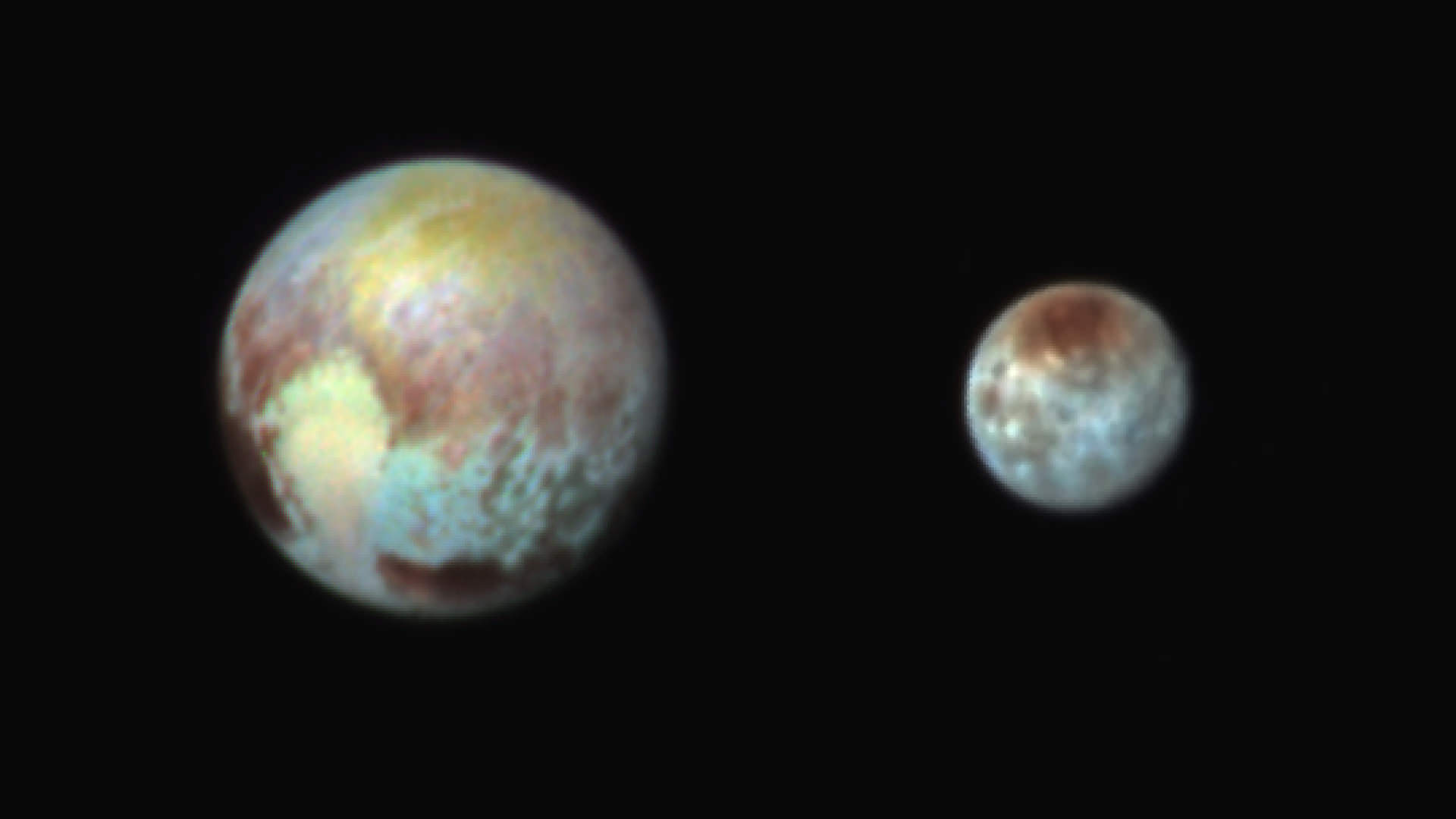
“Today we inspired a whole generation of new explorers,” Bolden said to the crowd emotionally. “And you have more to do!” – as he pointedly acknowledge a crowd of young people in the room.
Pluto is covered by a spectacular array of craters, mountains, valleys, a whale shaped dark feature and a huge heart-shaped continent of pinkinsh bright ice as seen in the image taken on July 13 when the spacecraft was 476,000 miles (768,000 kilometers) from the surface.
“New Horizons has sent back the most detailed data ever of Pluto and its system of moons.”
“Every mission expands our horizons and bring us one step further on the Journey to Mars,” said Bolden regarding NASA’s agency wide plans to send astronauts to the Red Planet during the 2030s.
“You have made Pluto almost human.”
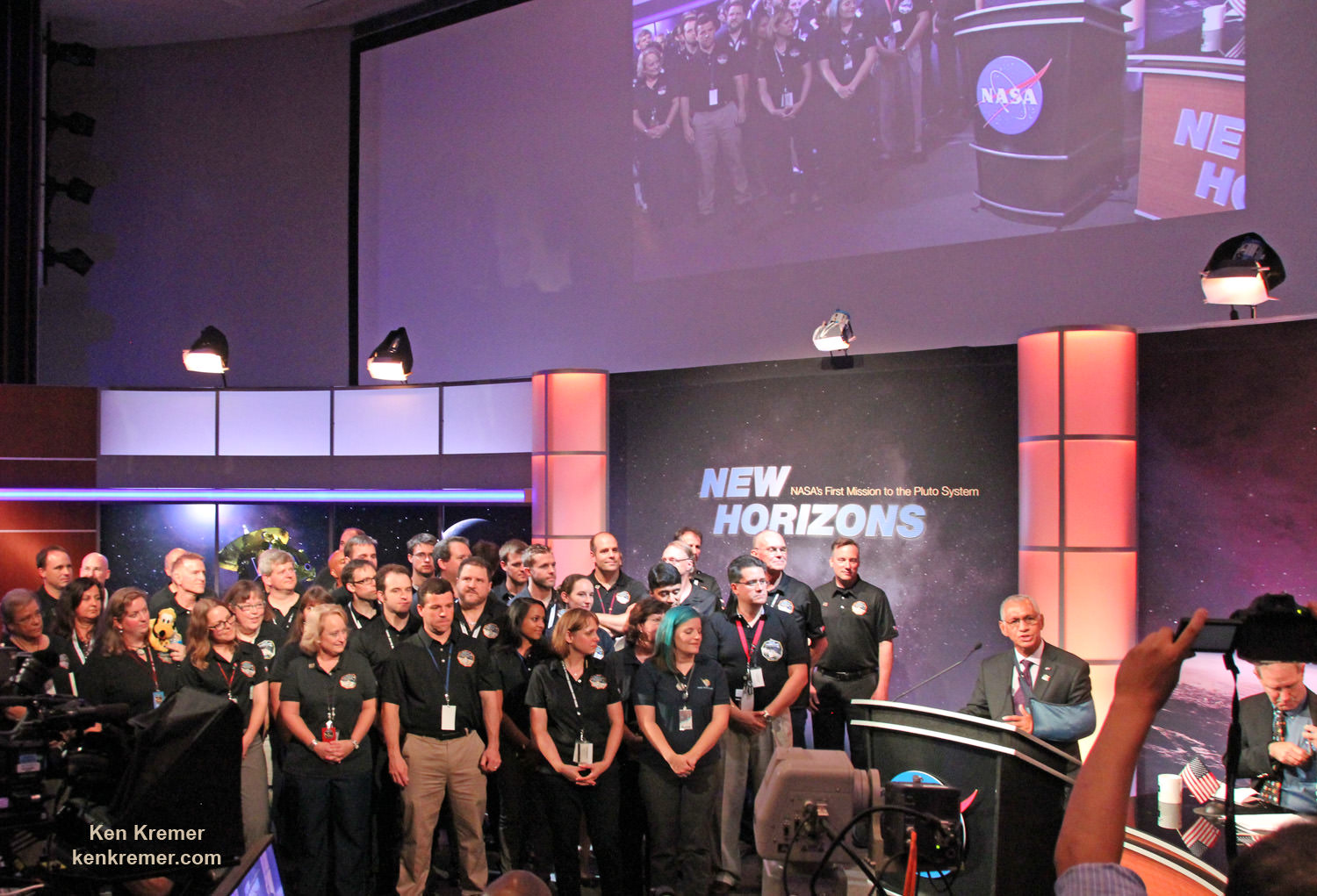
Tomorrow, the more than year long data playback begins.
“The best is yet to come,” said John Grunsfeld, NASA Associate Administrator for the Science Mission Directorate, at the media briefing.
“You haven’t seen anything yet. There are many more months of data to be sent back.”
“This is like the Curiosity landing. This is just the beginning for fundamental discoveries. It’s a tremendous moment in human history.”
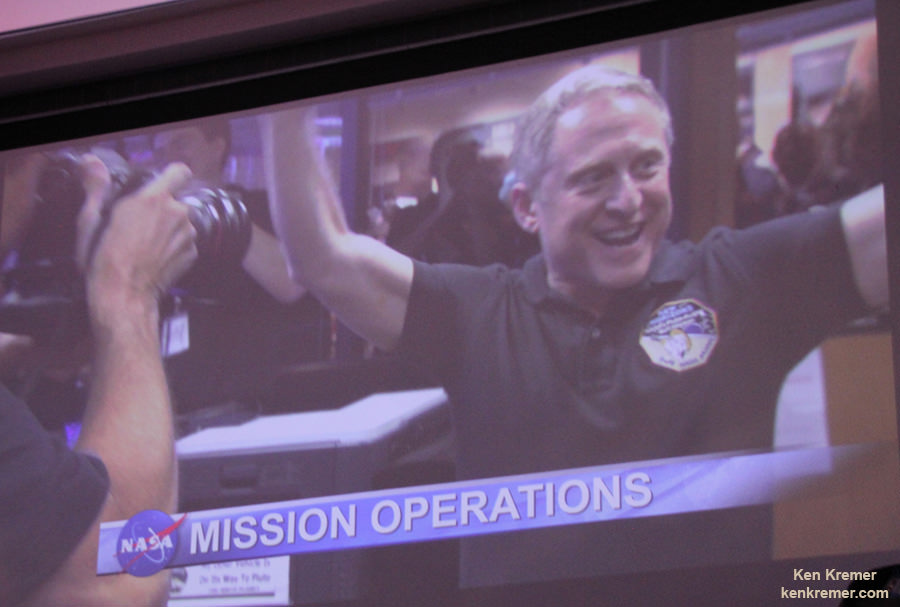
Congratulations rolled in from around the world including President Obama and world renowned physicist Stephen Hawking.
It has been three decades since we last visited planetary bodies at the outer reaches of our solar system when Voyager 2 flew past Uranus and Neptune in 1986 and 1989.
The New Frontiers spacecraft was built by a team led by Stern and included researchers from SwRI and the Johns Hopkins University Applied Physics Laboratory (APL) in Laurel, Maryland. APL also operates the New Horizons spacecraft and manages the mission.
Watch for Ken’s continuing onsite coverage of the Pluto flyby on July 14/15 from the Johns Hopkins University Applied Physics Laboratory (APL).
Stay tuned here for Ken’s continuing Earth and planetary science and human spaceflight news.
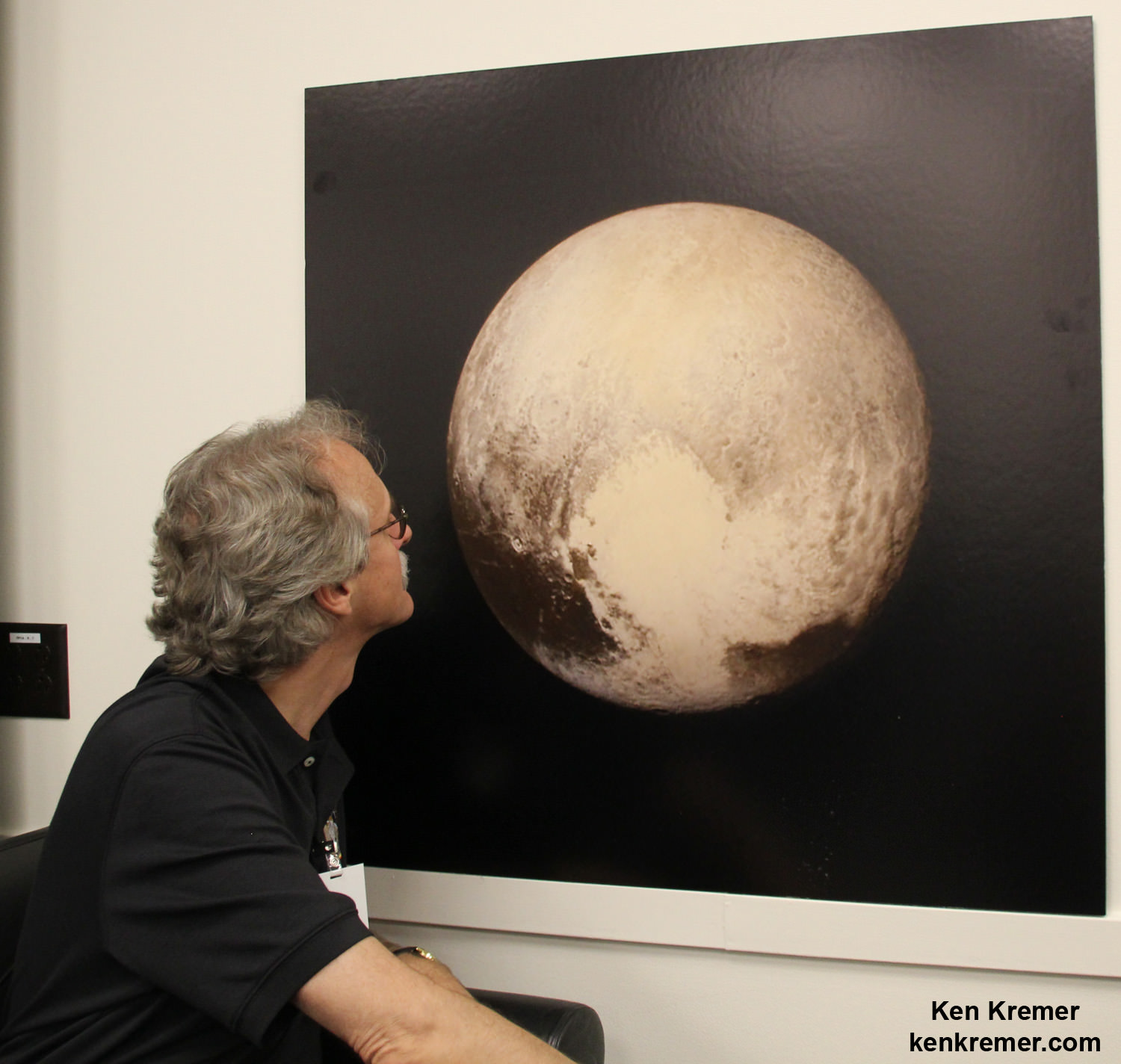
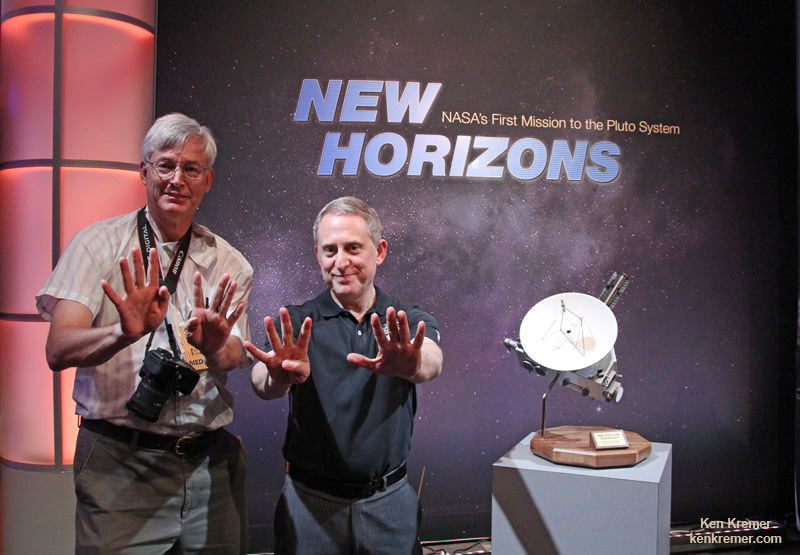

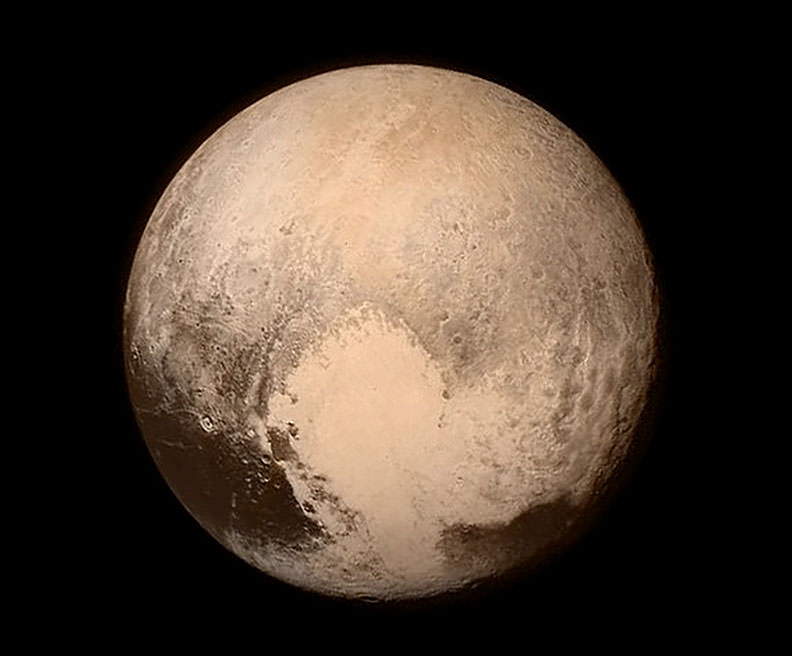
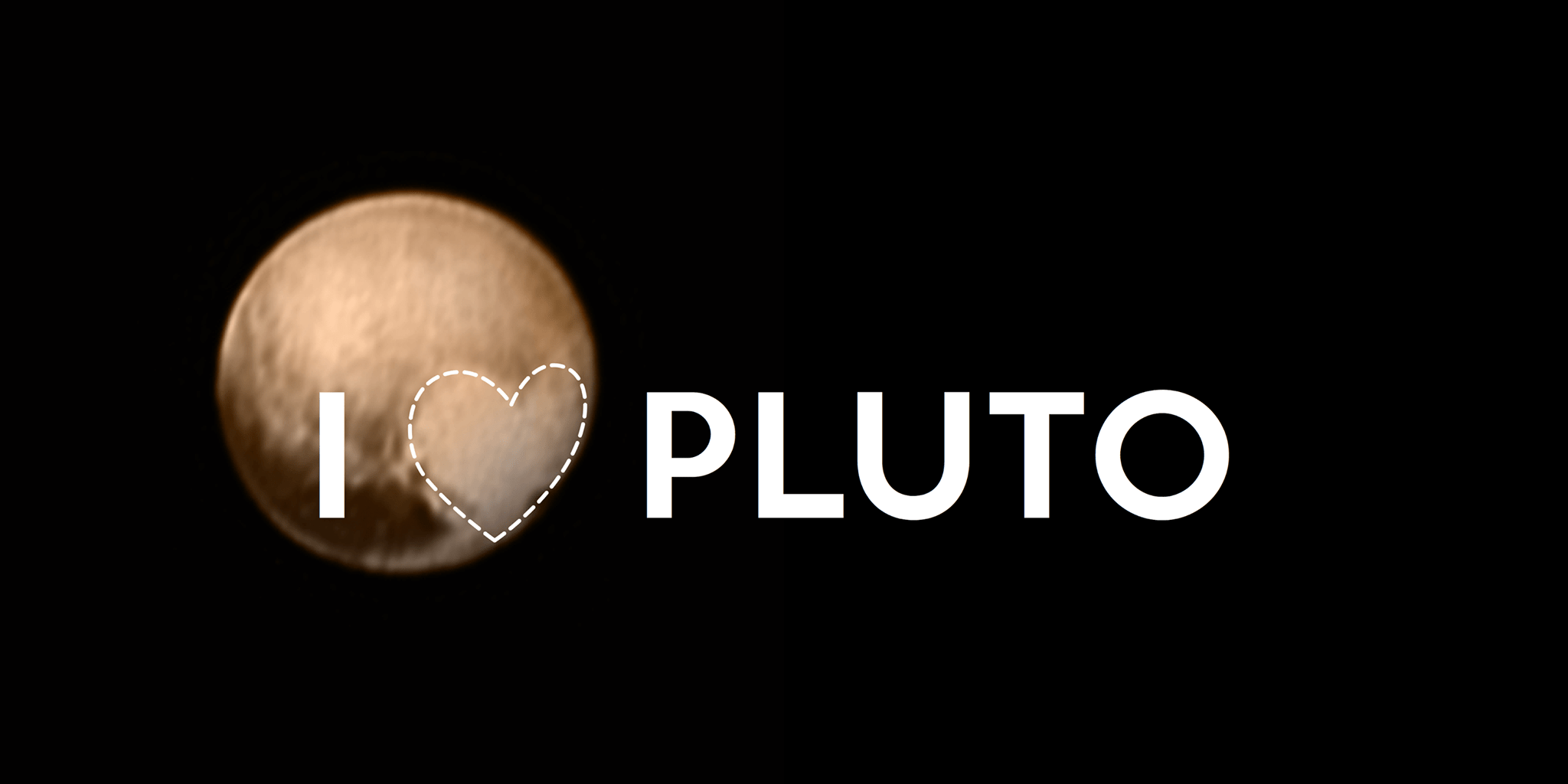
This is awesome!
heh heh, I like the “nine” meme.
Funny images! Spencer really takes a close look at Pluto. And party poopers like planet terminator Neil deGrasse Tyson ask Stern to put his hands flat on the table, so that he can learn him how to count the planets with an axe. “-So that you won’t count beyond eight any moare, per definition.”
Other apes don’t have thumbs anyway. And Mickey Mouse, who actually own Pluto according to current trademark jurisdiction, have how many fingers? Alan, how many?
I’m confused who you’re knocking here… The 8 planets camp or the 9? And per your, “Other apes don’t have thumbs anyway”… I’m hoping that’s not a racist remark about NdGT..? I’m guessing not, but it sounds suspicious.
Is Ken undecided or what? 😉
Ken doesn’t buy it :D, but he is calling it a planet here for good relationship with him.
If Pluto is not a Planet neither are any of the others (Cant you count 8+1= ?) some Humans are so arrogant ….
IT’S ONLY WORDS!!! GET OVER IT. IT DOESN’T MATTER. (some Humans are so anal/control-freakish) Each body in our Solar System is a unique “WORLD”. How’s that?
That is not how science works. Telling people that they should ignore the faulty outcome.
The science way is to bring the astronomers back and correct the mistake that called Pluto a dwarf. It is a small planet but definitely not a dwarf, neither is Eris.
Either way, I don’t see how it matters what we call them. Let’s just study them.
Jeff if brains were Planets I am Jupiter and you are Pluto 🙂 Amen
Because I’m suggesting that semantics and nomenclature are arbitrary and focusing this much attention on such things is akin to caring what the Kardashians are wearing to the premiere tonight? Same as, “Nebulas/Nebulae”, Tomato/Potato… Hell, Metric/Imperial is a GREAT example because THAT actually MAKES things confusing and difficult per conversions and the world puts up with that (no thanks to my stupid country) Call the worlds whatever you like, but stop proselytizing to the other camp… BOTH sides! It’s not like “Dwarf Planet” is insulting TO the cold world billions of units away… So, beyond akinning this to the “N” or “B” words and the emotional baggage that they offer which here is moot, I can’t think of any valid reason it should matter either way.
Hey, if Charles Bolden says there are nine — and ONLY nine — planets, then I guess that’s how many there are. /sarc
It’s an astounding accomplishment regardless. Congratulations New Horizons, and everyone involved! Can’t wait to see all the goodies this probe has collected for us!
Briefing today at 3pm with data supposed coming down (over less than 56k modem speeds) since 5am this morning with over 120GB of data to chew through over the next 16 months starting with “low resolution” stuff today….
Check NASA TV 3pm eastern time….
I understand Stern is for calling Pluto a planet and a principal member of a class of planets in the Solar System associated with Kuiper belts (which occur around other stars too) but nine seems a low mark – doesn’t Stern himself actually support adding others? He offered a paper back in 2000 – http://www.boulder.swri.edu/~hal/PDF/planet_def.pdf – that defined a calculated criteria for calling planets planets. Many large objects like Sedna and Eris weren’t known then but perhaps if someone updates the graph with various bodies (like the moons of Jupiter etc) we’ll see a simple demarcation?
This url breaks planets off at just near 200 miles – http://phl.upr.edu/library/notes/amassclassificationforbothsolarandextrasolarplanets (for the “Mercurial”s)
How about 3 classes of planets based on composition and structure? Gas Giants, Terrestrials and Plutonians. Because some day we are going to find giant Pluto-like planets (Earth sized or larger) – if not in the solar system then around other stars.
The category ‘Dwarf Planet’ could be reserved for objects large enough to assume hydrostatic equilibrium (be ’round’) but too small to have a differentiated core.
The ‘cleared orbit’ clause is eventually going to have to be dropped eventually anyway, because even a Jupiter-sized object in a very distant orbit may not clear its orbit within the lifetime of its star.
So you want a new system based on fictional planets? How about calling them Belt or Cloud planets? No need to drop anything.
Fictional? You mean as in, “I can’t see it so it disappeared?”
My own belief is the Sun still exists at night, the Moon is still there when I close my eyes, etc.
We have non-fictional examples of all four of the categories I proposed in our own solar system, we just label 2 of them differently. We lump together terrestrials and plutonians despite their different compositions, and we lump together differentiated and undifferentiated objects despite their completely different structures and histories. That’s not a very useful classification system.
We’ve also seen both gas giants and terrestrials in other star systems – those aren’t fictional either, unless you accept some sort of fictional conspiracy theory. And you are standing on a fine example of a terrestrial. Except wait… I can’t see you so you must be fictional too. 😉
Fictional? There are 2000 exo planets out there that don’t even come close to what we find in the solar system. Should we all disregard them and call them not real planets because they do not like our 9 planets?
The “‘cleared orbit’” clause is an incredibly stupid idea because you cannot know if a planet is a planet unless you have wasted decades of research looking for possible other objects near its orbit.
This ridiculous resistance that there are only 8 real planets is no better than creationist claiming that Earth is only 6,000 years old.
You guys don’t know what science is.
Here’s a list of the many classes of planets, discovered and hypothetical (what some on this thread with a limited vocabulary seem to call, “fictional”), so far: https://en.wikipedia.org/wiki/List_of_planet_types
Jeff did you fall out of the pram when you were looking at the Moon?
First of all Pluto is not a planet but a dwarf planet and other dwarf planets are even less explored than Pluto so the article makes some unsubstantiated claims
If Pluto was in a slightly different orbit it would be classified as a planet, not a dwarf planet, under the current IAU definition.
A rose by any other name…
The article is obviously referring to the 9 “classical” planets. PLEASE stop nit-picking you anal sh!ts (on both sides of this tedious fence) and simply ENJOY THIS GLORIOUS ACCOMPLISHMENT FOR WHAT IT F-ING IS! ~~~ Thank You. Good Night.
“It is not a planet because it is a dwarf planet”. That is like saying, that is not a human because that is a dwarf human.
And Humans becomes dwarfs when they forgot to put out the garbage can when they went to work. Even when these dwarfs are bigger than me they are still dwarfs because their garden is still littered.
But in science you can’t compare humans and planets.
Could New Horizons be used to verify the new SWx prediction models? If so, that would definitely be a BONUS! If the models are accurate, radio x-missions from NH will confirm?
Meanwhile, lets hope Mr. Sol behaves and doesn’t corrupt the data stream!
Great to see Pluto with its love heart being invited back into our solar system as a planet.. I am wondering if other KBOs may ever be invited to join the solar system.. What is clear is that nature likes to paint outside our lines and continually surprise! Great times for science!
KEN IS RIGHT, IT IS 8
http://i2.photobucket.com/albums/y33/HeadAroundU/KEN%20IS%20RIGHT%20IT%20IS%208.jpg